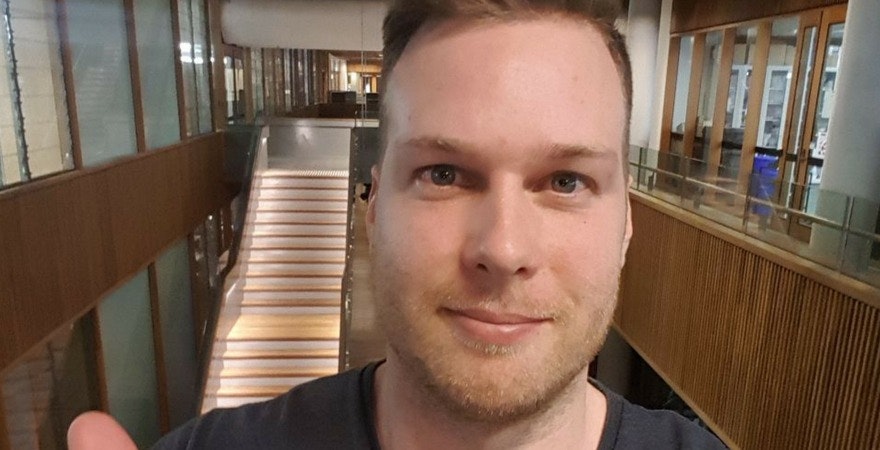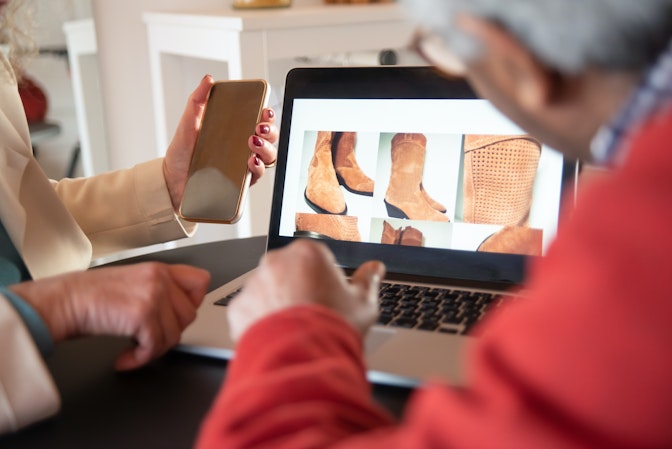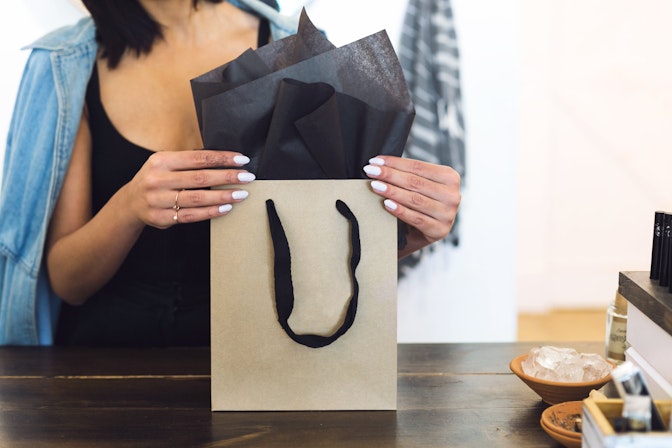Let’s answer a popular dropshipping FAQ: How much does it cost to start a dropshipping business?
Technically speaking, you can start dropshipping for less than $100. With the right combination of free trials and starter plans—and a willingness to look the other way and hope for the best when it comes to the quality of your products—a little investing is all that stands between you and a dropshipping store.
But to borrow from the Big Book of English Expressions: Just because you can doesn’t mean you should.
This post will break down unavoidable costs that any (legitimate) dropshipping store will need to absorb to get off the ground. Read to the end and you’ll have an itemized list of your dropshipping startup costs, plus insights from entrepreneurs who can tell you what to expect.



How much does it cost to start dropshipping?
No doubt, dropshipping has lowered the barrier to entry to starting a business. You can coordinate with suppliers from around the world and sell their products without ever holding inventory. It’s an awesome setup.
So awesome, in fact, that people can get carried away, dreaming of a six-figure business that doesn’t require any investment.
→ Click Here to Launch Your Online Business with Shopify
The thing is, starting a successful business has never been free, and that’s still the case. Even with dropshipping.
What is dropshipping?Dropshipping is an ecommerce business model that allows entrepreneurs to run an online store and sell products without having to purchase inventory upfront. Only once you’ve made a sale do you pay your supplier, who then ships the products directly to your customer. You can use a tool like DSers to connect your store to thousands of suppliers and find products to dropship. |
You don’t need to get a second mortgage, but you will have to put some money into your dropshipping business before your dropshipping business puts money into your pocket.
Dropshipper cornerLet’s hear about the cost to start a business from Paul Lee, the man behind Husky Beard:
|
The cost of starting a dropshipping business
The most stripped down version of a dropshipping store would include:
- A Shopify subscription
- A DSers subscription
We’re going with Shopify because it’s the most popular ecommerce platform out there. And we’re going with DSers because it’s the best AliExpress dropshipping tool.
Good news! Shopify has a free trial! After that, it will cost $39 per month, but at least you can get rolling for free. So Shopify covers the store part of the equation. Now for the dropshipping part.
DSers has a free basic plan. You won’t be able to scale with it—there is a 3,000-product cap. But you can at least get set up before forking over your credit card. Eventually, you’ll need to upgrade to the $19.90 Advanced plan to access features like automatic inventory updates and bundle mapping.
If you’re serious about dropshipping, then there is one more must-buy: a domain. You can easily buy a new domain through Shopify—you’ll be asked about it during your trial—and it’ll be an annual payment of $14.

All right, so if you do it cheap and dirty, the costs of launching your store will look like this:
Free Shopify trial + Free DSers plan = Free
Then, with a bit of sprucing up, we’re looking at:
$39/month Basic Shopify + $14 Domain + $19.90/month Advanced DSers = $72.90
Then we’d be looking at $48.90 each month after that—the recurring Shopify and DSers costs, minus the $14 domain.
Dropshipper cornerLet’s pause this math class to hear from Tim Vangness, Dropshipping Guru and creator of this dropshipping YouTube channel:
|
Dropshipping product validation costs
This is the “eat your vegetables” portion of launching a dropshipping store: Just like nobody is going to force-feed you your daily dose of veggies, nobody will force you to order your dropshipping products for yourself.
But you should still do it.
The awesome thing about dropshipping is that you never handle the products you’re selling. While this might solve one of the biggest challenges of commerce (having cool products to sell), it introduces a new set of considerations—namely, you don’t control the quality of the products, the timeliness of delivery, or the appearance of the packaging.
That’s why we recommend setting aside some time (and money) to order the products that you’re going to be selling in your store.
This gives you a chance to investigate the suppliers. After you place your order, for example, you can follow up and ask, “When can I expect my order to arrive?” And when it does arrive you can consider whether it meets your expectations. Is it defective in any way? Would you want to buy it?
Once you have your products on hand, you can use them to generate interest in your store. Show them off. Take pictures of people holding them. Ask your friends what they think (and how much they’d pay).
OK, so how much will eating your dropshipping vegetables cost you? Well, you don’t need to buy every variation of every product. If you sell yellow, red, and blue dresses from the same supplier, you’re probably fine ordering just one color. But it’s definitely a good idea to order at least one sample from every supplier whose products you plan to offer at your store.
Let’s say that this will cost, oh, $75.
This is mostly an upfront cost, so if we add it to the store infrastructure costs discussed above, our dropshipping business balance sheet looks like this:
$72.90 (Shopify+domain+DSers) + $75 (product validation costs) = $150 give or take
So far, we can expect to be paying about $150 by the end of the first month.
Dropshipper cornerTim Kock has much experience in dropshipping and has this to say about test orders:
“When you’re running a dropshipping business, you won’t be handling your inventory—your suppliers will ship your products directly to your customer’s doorstep. With this in mind, it’s always a great idea to place a test order for products that you’re thinking about selling. This will enable you to go through the entire purchasing process, just like your customers will when they place an order. You’ll be able to review the quality of the products, the shipping times and standards, and take personalized product images yourself—it really helps you to take your store to the next level.” |
Dropshipping store enhancement costs
That $150 that you spent on your website only gets you so far. You might need to install apps to get all of the functionality you want. For example, Shopify and DSers don’t have a default way for you to offer discounts for bulk purchases.
There are workarounds, sure. You can offer a “product” that is actually five items bundled into one, and then sell that quintet at a price lower than buying five individual items. But you don’t want to build your business on workarounds. You want your store to be easy to navigate for your shoppers and easy to operate for you.
Sometimes, the best solution is to pony up and install Shopify apps.
The Shopify App Store is stuffed with apps to address just about every tweak, improvement, or upgrade that you can imagine. Let’s look at a few common features that store owners want, as well as a small sample of the apps that can make it happen.
Cross-selling and upselling
Cross-selling involves offering a product or service related to what the customer has already purchased, whereas upselling is a technique used to encourage customers to buy an upgraded, more expensive version of a purchased item. These techniques aim to increase a merchant’s average order value (AOV).
Shopify has some great apps for cross-selling and upselling:
- Cross Sell ($29.99/month)
- Cart Convert ($19/month)
- Bold Upsell ($9.99/month)
Bulk pricing
Bulk pricing is essentially discounted pricing that customers buying large quantities of products can access before checkout. You can offer bulk pricing on your dropshipping store to encourage people to buy more and return for more shopping in the future.
Certain Shopify apps make it easy to implement bulk pricing, including:
- Discount Pricing ($19.99/month)
- Quantity Breaks ($20/month)
- Bulk Discounts & Sales Scheduled ($18.95/month)
Exit intent
Exit intent is smart behavioral technology that automatically delivers an enticing offer to a visitor about to leave your website. It tracks the mouse movements of website visitors and identifies when a visitor’s cursor moves to the top of the screen to close the browser window.
Shopify has several apps that provide exit-intent technology:
- Wheelio ($14.92/month)
- Spin-a-Sale ($9.99/month)
- POP UPS | Smart Popup Builder ($29/month)
You don’t need any of this stuff, but let’s say you really want the ability to give customers a discount if they buy 10 products instead of just one. Looks like a bulk pricing app will cost around $20 per month, so let’s tack that on to our starting costs.
$150 (opening store + checking products) + $20 (a must-have app) = $170
We’re now up to about $170 after the first four to six weeks.
Dropshipping marketing costs—the biggie
Everything we’ve looked at so far has had a specific price tag attached to it. Marketing doesn’t.
It’s impossible to say how much money you need to spend on marketing. There are, however, some assumptions that we can use to get an estimate.
The average global conversion rate in ecommerce is somewhere between 2% and 3%. That’ll vary by niche and country, but let’s just play this out and say that conversion rate is 2.5%. That means if you get 200 people to your store, you can expect five of them to purchase something. And how do we get 200 people to our store? Marketing.
At the moment, the biggest marketing channel for dropshippers is Facebook, so let’s look at driving 200 visitors to your store from the platform. WordStream pegs the average click-through rate (CTR) for Facebook ads at 0.9%. Let’s assume your ads are good, and you have a 1% CTR.
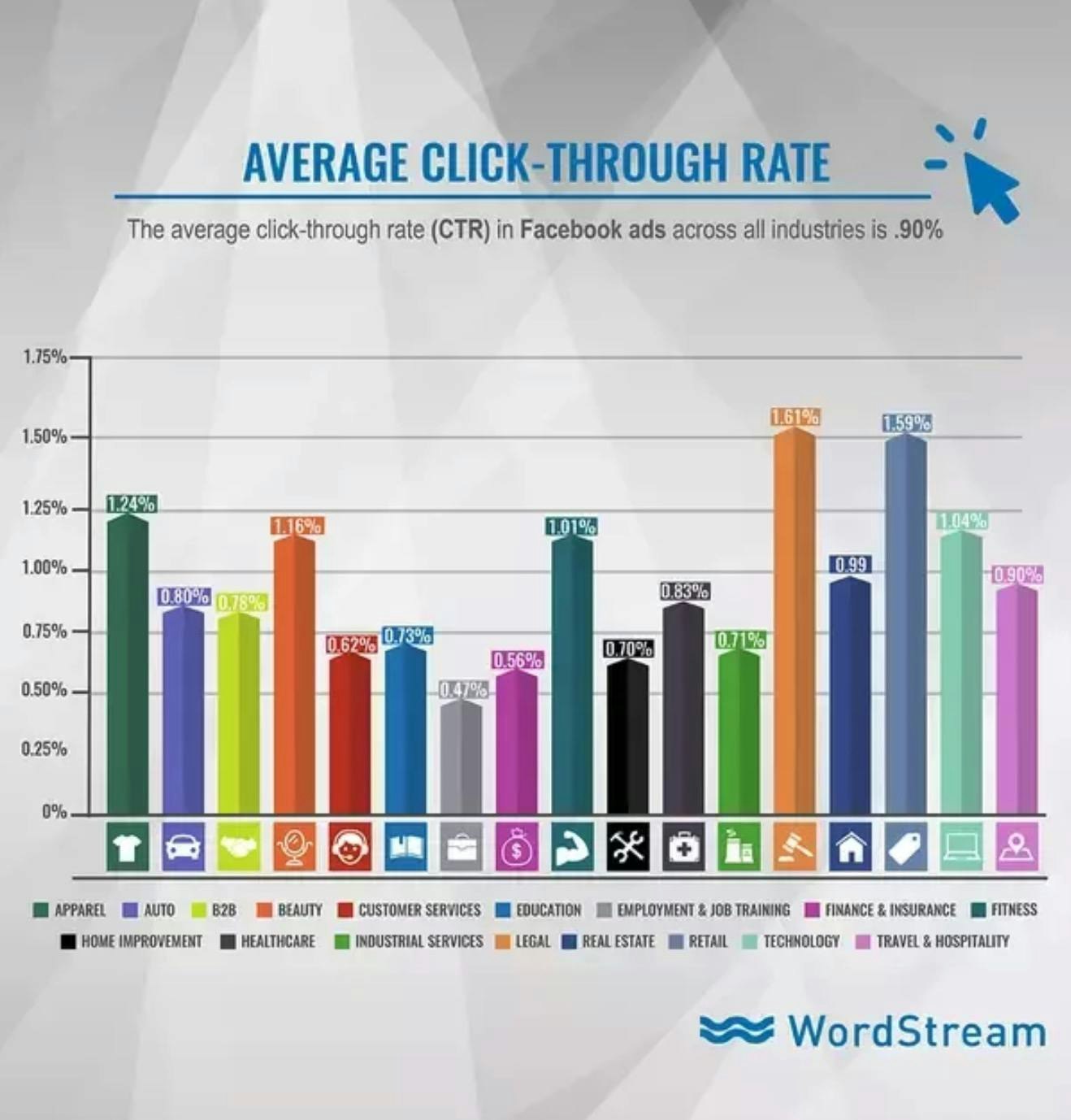
To get 200 people to your store, you’ll need your ad to reach 20,000 people. The price for 20,000 impressions will vary depending on who you’re targeting. Reaching US Facebook users will cost more than reaching Singaporean Facebook users.
According to marketing software provider AdStage, the average cost per thousand impressions (CPM) was $12.45 in Q4 2017. Let’s call that a clean $12.50. Now we have an equation to work with:
(20,000 / 1,000) x 12.50 = $250
Looking at these averages, we land at $250 in Facebook advertising costs to generate five Facebook sales.
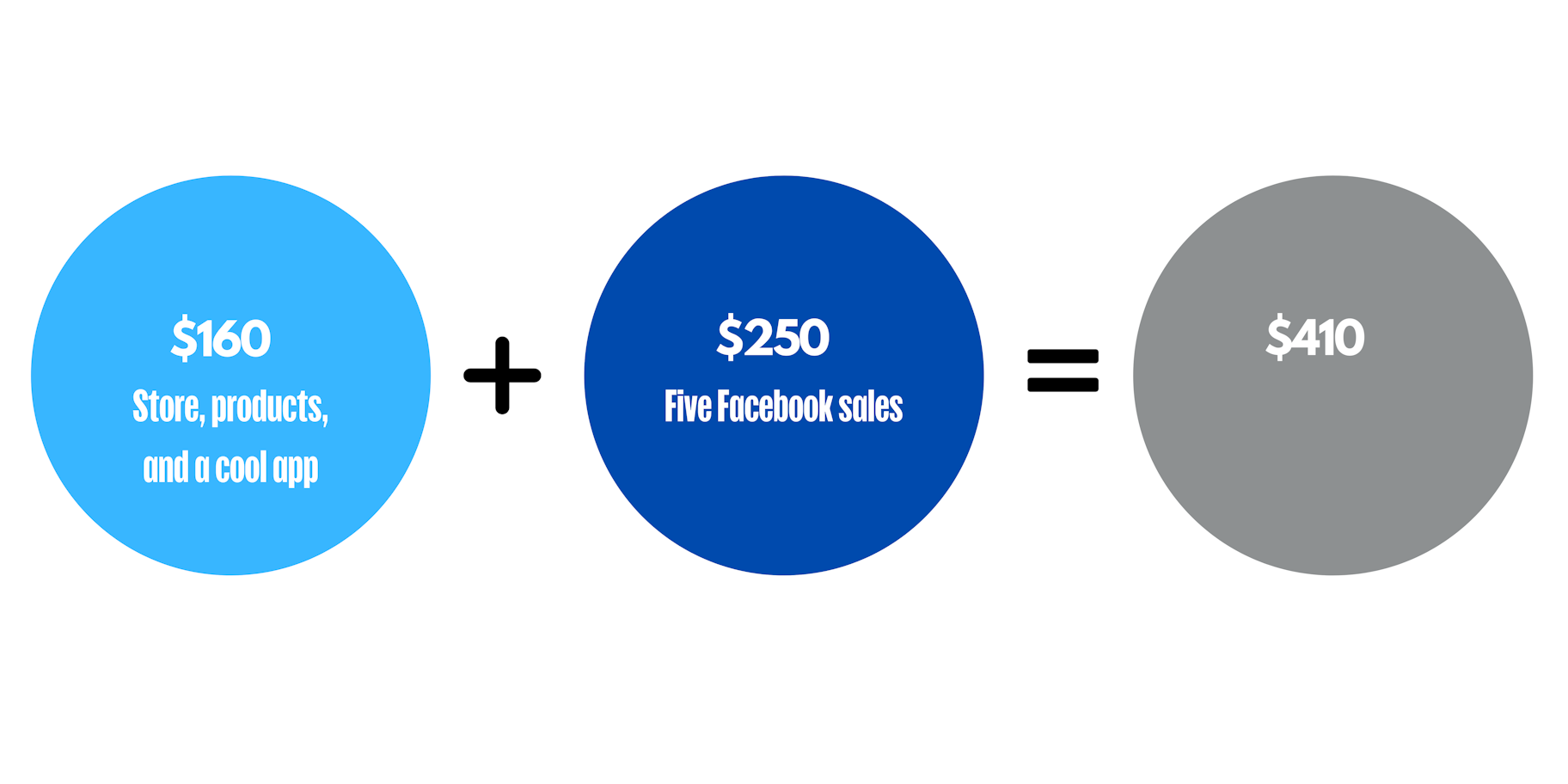
There are, of course, levers that you can pull to manipulate these numbers and increase your profit. First and foremost, make awesome ads. The better your ads, the more often people will click on them, and the lower your cost per click (CPC). If you want to do some homework on creating high-impact ads, we’ve got you covered.
You can also target countries with lower CPM rates. Dropshipping users have had success in lots of countries other than the obvious ones; don’t feel like you have to target the US, UK, Canada, and Australia.
Finally, there are steps you can take to increase the conversion rate and increase the average order value at your store. Designing easy-to-navigate product pages, for example, is one way to get people to convert once you lure them to your store. This would drive up that 2.5% percent conversion rate that we used earlier.
You can also use cross-selling and upselling apps to increase average order value. Those will cost you a bit of money, but with a few nice upsells per month—hardly an overly ambitious goal—they’ll pay for themselves.
Dropshipper cornerHere is some marketing wisdom from another dropshipper – Artsy Wall founder Matīss Ozerskis. |
Dropshipping website cost: Our verdict
Spending money to launch an ecommerce store only hurts if (a) you thought it would be free, and (b) you forget that you’re doing this to make money. Remember: The money you spend starting your store is an investment. And whether you’re buying stocks or launching stores, you invest in things because you expect a return.
If you stick with ecommerce, you’ll never stop pumping money into your store. After your price-breaks app does the trick, you’ll want to get a cross-selling app. As your Facebook campaigns multiply, you’ll want to invest in some marketing automation technology. And we haven’t even touched on email marketing yet, or premium Shopify themes, or logo design tools like Hatchful, or—well, let’s leave it there for now.
It’s hard to say how much your returns will be or how long it will take you to recoup them. But as expenses cross from double digits to triple digits and beyond, remind yourself that there is no free way to launch a business. Not a good business, anyway.
We’ll sign off with one more nugget from Tim Vangness:
Once you start to generate sales, you need to use your profits wisely. Set aside a predetermined amount of all your revenue to cover the costs of returns—any large business will have returns!—and to cover any unforeseen costs that may arise. With the remaining profits, I would recommend putting as much back into growing your business as possible. This will be split into two main areas.
The first is improving your business’s infrastructure, from your website design to your email marketing software. Some of these services cost money, but once you are making a profit, they can significantly improve your conversion rates and customer retention. This will make you more money down the track and allow your paid advertising to be more aggressive than your competition, as you can determine your lifetime value of a customer versus the profits of a single sale.
Dropshipping startup costs FAQ
Can you start a dropshipping store for free?
Yes—but only if you’re already signed up for ecommerce hosting. Depending on your provider, you should be able to find apps that connect you with suppliers and let you add a certain number of products to your dropshipping store for free.
Is dropshipping still profitable in 2023?
Based on the healthy market outlook for dropshipping, it’s safe to say that it is still a profitable business. Grand View Research predicts that the global dropshipping market will be valued at $557.9 billion in a few years. This makes dropshipping an excellent choice for those looking to earn a sustainable income without going down the costly traditional ecommerce route.


